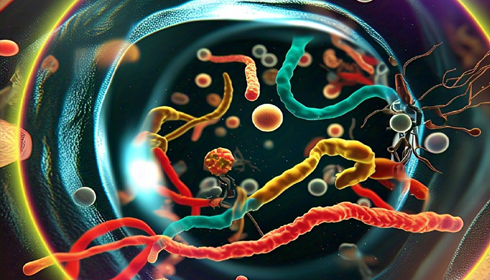
Nasal Bacteria Could Influence COVID-19 Risk, New Study Finds
A peer-reviewed study conducted by researchers at George Washington University discovered an essential, although underestimated, relationship between nasal bacteria and the chance of getting COVID-19. The findings, published in EBioMedicine, reveal that some bacteria in the nose may increase the expression of proteins used by SARS-CoV-2 to infect cells, raising the risk of infection.
The new coronavirus typically enters the body via the nose, where two critical proteins, ACE2 and TMPRSS2, serve as entrance and activation points. The researchers discovered that those with increased gene expression of these proteins were substantially more likely to get COVID-19. In fact, high expression levels were linked to a threefold increase in infection risk. Those with relatively high levels faced twice the risk.
Interestingly, in many persons who subsequently tested positive, gene expression levels increased immediately before diagnosis, implying that alterations in these levels could serve as an early warning indication of infection susceptibility.
The scientists examined nose swab samples from more than 450 patients, including those who later tested positive. Their goal was to determine whether bacterial makeup in the nose influenced how these proteins were produced.
They discovered that three common nasal bacteria—Staphylococcus aureus, Haemophilus influenzae, and Moraxella catarrhalis—were linked to higher ACE2 and TMPRSS2 levels. In contrast, Dolosigranulum pigrum has been associated with reduced expression of these proteins and may provide some protection.
"We're learning that some bacteria in your nose might be helping viruses get in," said Dr Daniel Park, the study's first author and senior research scientist at GW.
S. aureus stood out as especially significant. Although not present in everyone, over 20% of participants contained this bacterium in sufficient levels to almost increase their chances of having heightened viral entry protein expression.
The study further refined our understanding of gender differences in COVID-19 susceptibility. While prior research has revealed that women have higher ACE2 and TMPRSS2 expression, this study discovered that men with raised levels are more likely to become sick. This shows that men may be more vulnerable to high expression levels, possibly due to immune response variations.
This work provides promising insights into how we can forecast and perhaps minimise individual COVID-19 risk. Dr Cindy Liu, co-author and environmental health professor at GW's Milken Institute School of Public Health, says the nasal microbiota may play a larger role than previously anticipated. It may even be feasible to adjust it to lessen susceptibility to respiratory infections."
The hypothesis that changing the nasal bacterial environment could reduce COVID-19 risk is still theoretical but not implausible. Previous research has demonstrated that microbiomes in the gut and skin influence immune responses. The nose, previously disregarded, could be the next frontier.
The study is part of a bigger body of research looking into the function of the microbiome in infection risk and immunological health. The Indian Council of Medical Research (ICMR) has previously said that a greater understanding of the human microbiome can help manage infectious illness epidemics.
Given that India has over 4.5 lakh COVID-19 cases and has had numerous lethal waves, findings like these are very important for public health planning, particularly in dense urban areas with high exposure risk.
This work undermines the long-held belief that COVID-19 susceptibility is mostly determined by external exposure and immunity. Identifying the nasal microbiota as a potential contributor brings up new possibilities for both diagnostics and prevention. Academic publications should not bury such discoveries in a post-pandemic world still grappling with extended COVID, reinfections, and future threats. Public health systems, especially those in India, should incorporate microbiome health into their respiratory illness strategies. Hygiene is more than simply masks and handwashing; it can also start inside the nose.